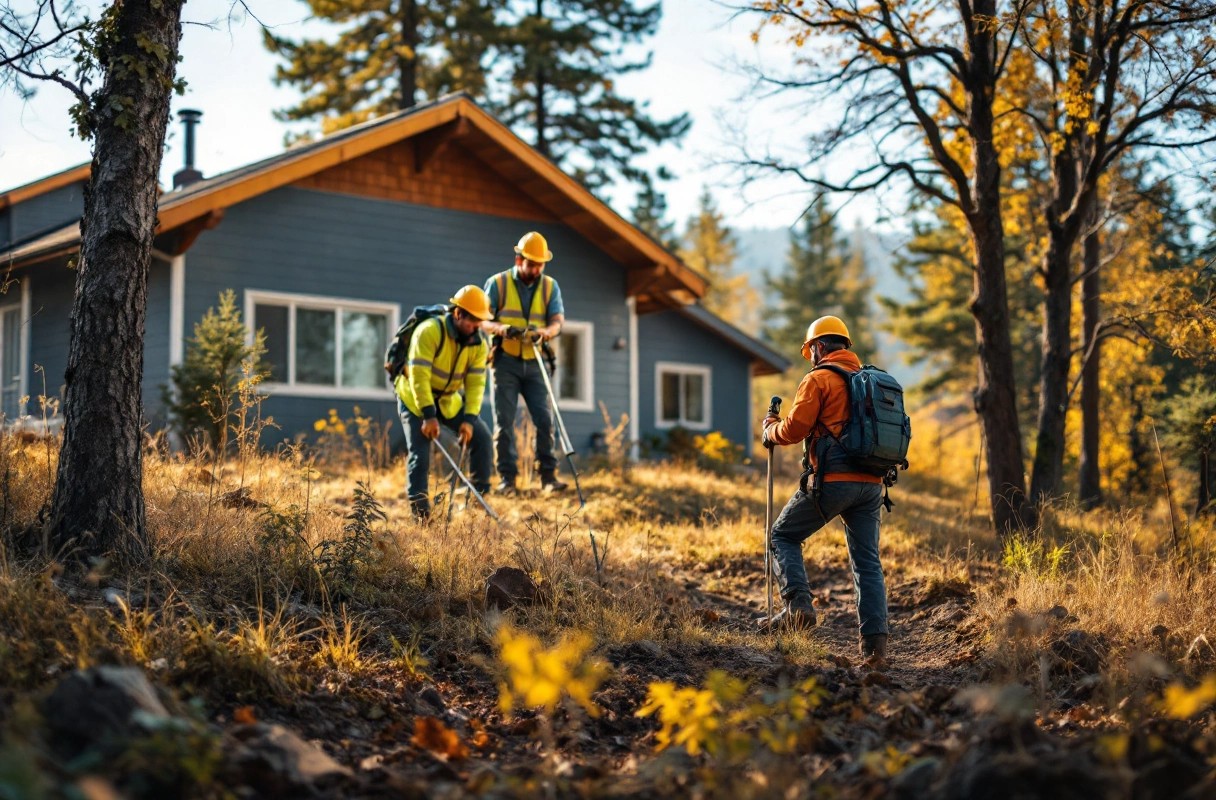Wildfires pose a significant threat to properties in Central Oregon, making proactive measures essential. With the region's unique climate and geographical features, understanding wildfire risks is critical for property owners. This article explores effective wildfire prevention maintenance strategies for rental properties, including risk assessments, fire safety measures, and landscaping solutions to reduce vulnerability.
Understanding Wildfire Risks in Central Oregon

Central Oregon's geographical characteristics significantly contribute to its wildfire risks. The region is characterized by dry summers, abundant vegetation, and strong winds, creating ideal conditions for wildfires to ignite and spread rapidly. The presence of pine forests, dry grasses, and other combustible vegetation increases the likelihood of fire outbreaks, making a comprehensive wildfire risk assessment necessary for all property owners.
Local climate considerations are equally important in understanding these risks. The high desert climate results in low humidity levels and limited rainfall during the summer months, further elevating the chances of wildfires. Property owners should regularly assess their surroundings for potential fire hazards, such as overgrown vegetation, proximity to wooded areas, and previous fire history in the vicinity. By conducting thorough wildfire risk assessments, landlords can implement tailored strategies to mitigate potential threats to their rental properties.
Implementing Effective Fire Safety Measures
Implementing effective fire safety measures is essential for protecting rental properties in Central Oregon. Key fire safety measures include installing smoke detectors, fire extinguishers, and creating clear evacuation routes for tenants. Regular inspections of electrical systems and appliances can also help prevent fire hazards. Furthermore, property owners should ensure that tenants are educated about fire safety protocols, including how to respond in case of a fire emergency.
Legal requirements for landlords regarding fire safety vary by state, but many jurisdictions have specific regulations that must be followed. In Oregon, for instance, landlords are required to ensure that smoke detectors are operational and that tenants are informed about fire escape routes. Staying compliant with these regulations not only protects tenants but also minimizes liability for property owners. By implementing robust fire safety measures, landlords can create a safer environment for their tenants and reduce the risk of fire damage to their properties.
Landscaping Strategies for Fire Prevention

Landscaping plays a critical role in wildfire prevention for rental properties. The way a property is landscaped can either mitigate or exacerbate fire risks. To create a defensible space around rental properties, owners should consider the layout and types of vegetation used in their landscaping. Removing dead or dying plants and maintaining a buffer zone of at least 30 feet from the home can significantly reduce the chances of fire spreading to the structure.
Selecting the right plants is also essential for fire prevention. Fire-resistant plants such as lavender, succulents, and certain types of ornamental grasses are ideal choices for landscaping in fire-prone areas. These plants are less likely to ignite and can help slow the spread of fire. Additionally, maintaining the landscape by regularly trimming shrubs and trees and ensuring proper spacing between plants can help create a more fire-safe environment. Landlords should prioritize landscaping strategies that not only enhance the aesthetic appeal of their properties but also contribute to overall fire safety.
Developing Comprehensive Emergency Preparedness Plans
Emergency preparedness is vital for rental properties in areas susceptible to wildfires. Property owners should develop comprehensive emergency preparedness plans that outline procedures for tenants in the event of a wildfire. These plans should include clear evacuation routes, communication strategies, and designated meeting points for tenants to regroup after an evacuation.
Key components of an effective emergency preparedness plan include regular drills to familiarize tenants with evacuation procedures, maintaining updated contact information for all residents, and providing resources such as local emergency numbers and wildfire updates. Additionally, property owners should encourage tenants to create their own emergency kits, including essentials like water, food, and medical supplies. By prioritizing emergency preparedness, landlords can ensure that tenants are well-equipped to respond swiftly and safely in the event of a wildfire.
Navigating Wildfire Insurance Options for Rentals
Understanding wildfire insurance coverage is crucial for rental property owners in Central Oregon. Many standard homeowner's insurance policies may not fully cover wildfire damage, making it essential for landlords to seek specialized coverage that addresses their specific needs. When choosing a policy, property owners should consider factors such as the property's location, the extent of coverage, and any additional endorsements that may be necessary.
To select the right wildfire insurance policy, landlords should conduct thorough research and consult with insurance professionals who specialize in property coverage. Comparing different policies and understanding the terms, conditions, and exclusions of each can help landlords make informed decisions. Additionally, keeping an updated inventory of property contents can facilitate the claims process in the event of a wildfire. By securing adequate wildfire insurance, property owners can protect their investments and provide peace of mind for themselves and their tenants.
Best Practices for Central Oregon Property Management
Ongoing maintenance is essential for rental properties in Central Oregon to effectively manage wildfire risks. Regular property inspections can help identify potential hazards, such as overgrown vegetation, damaged roofing, or faulty electrical systems. Property owners should create a maintenance schedule that includes regular assessments of fire safety measures, landscaping upkeep, and structural integrity.
Monitoring and adapting to changing wildfire risks is another crucial aspect of property management. Landlords should stay informed about local fire weather conditions, participate in community fire prevention programs, and engage with local fire departments for guidance on best practices. By adopting proactive property management strategies, landlords can significantly reduce their properties' vulnerability to wildfires while ensuring the safety and satisfaction of their tenants.
Strategies for Wildfire Prevention Maintenance in Central Oregon
Wildfire prevention maintenance for Central Oregon rental properties requires a multifaceted approach that integrates effective strategies, regular assessments, and proactive measures.
For independent landlords and small portfolio property owners seeking professional maintenance and tenant support without the cost of full-service property management, RentalRiff provides tailored solutions to meet your needs. Our services can help you apply these wildfire prevention strategies effectively while also ensuring compliance with safety regulations.
If you're ready to enhance the safety and value of your rental properties in Central Oregon, visit our website or contact us for more information on how RentalRiff can assist you in wildfire prevention maintenance.

